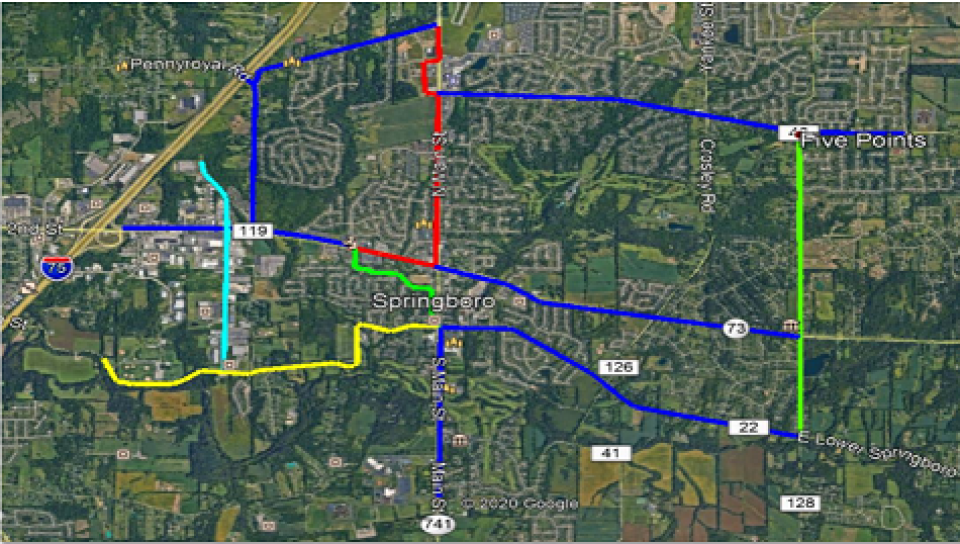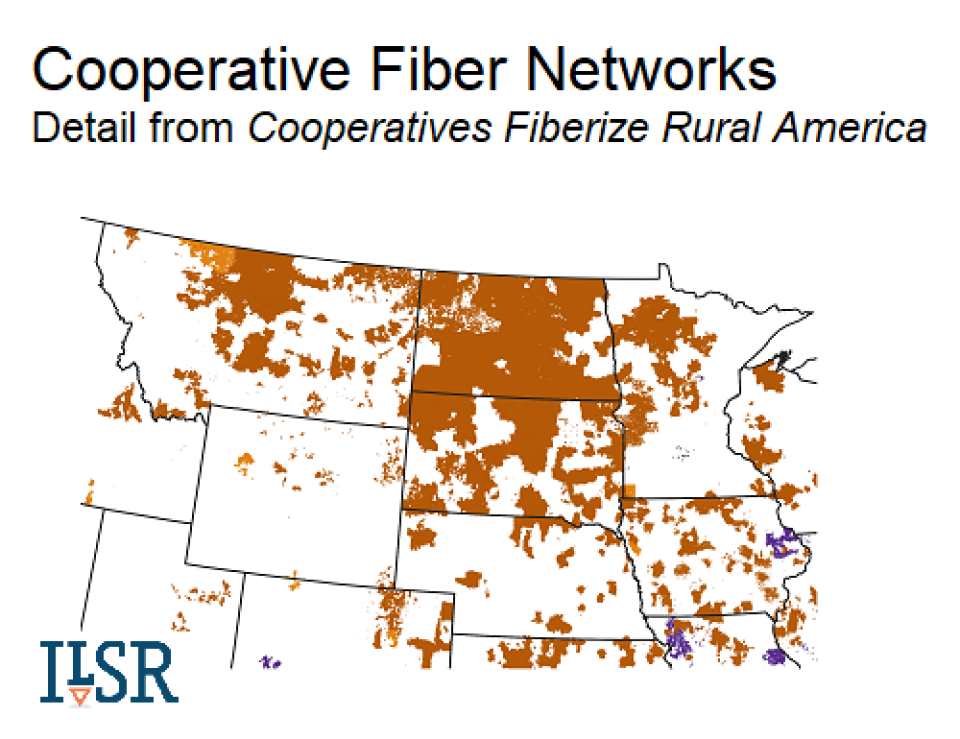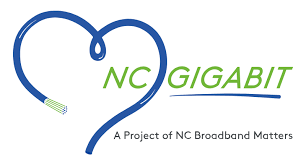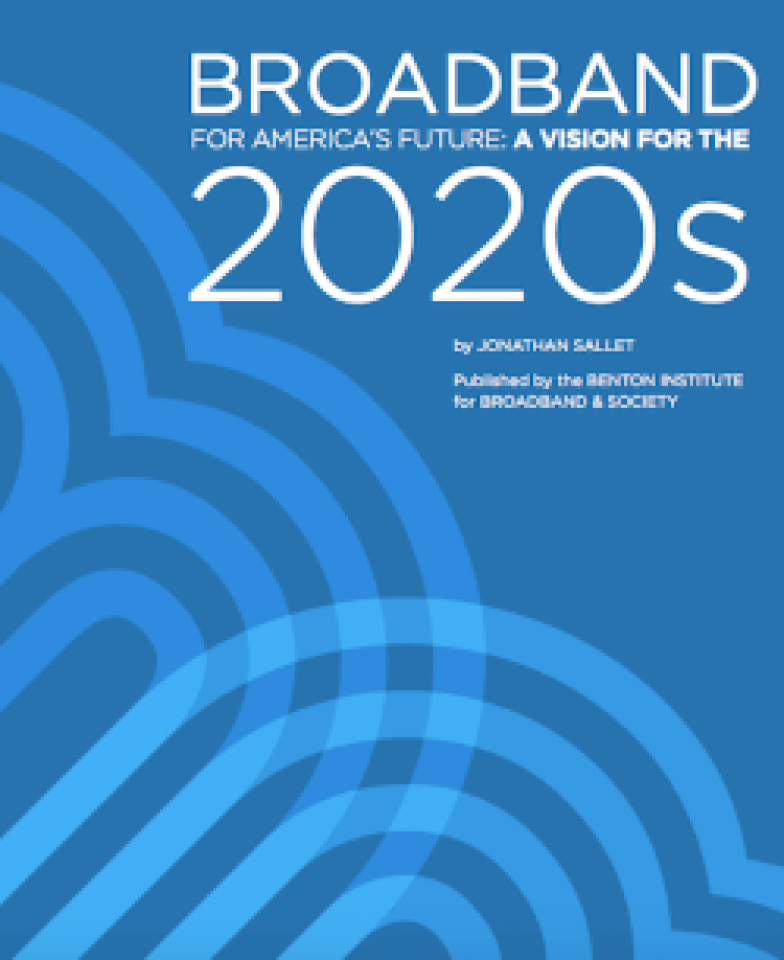
Fast, affordable Internet access for all.

In a new case study, the Institute for Local Self-Reliance explores the wide-ranging community benefits of Greenlight, the city-owned Fiber-to-the-Home network in Wilson, North Carolina. The case study details how it has been able to quickly adapt and expand service during the pandemic.
Built in 2008 with an eye toward the future and operated with local priorities in mind, Greenlight has a long track record of putting people first. A few examples are:
Access for All
Economic Development
Education
This week on the show Christopher is joined by Mason Carroll (Monkeybrains), Deborah Simpier (Althea Networks), and returning champion Travis Carter (US Internet).
The group collectively imagines what they would recommend to the FCC if they were called upon to help facilitate urban wireless deployment in the name of more affordable, equitable Internet access. They dig into different approaches, dissect the 5G hype, and mull the recent opportunities offered by Citizens Broadband Radio Service (CBRS). Putting on their private Internet Service Provider (ISP) hats, Mason, Deborah, and Travis tell Christopher what they'd be looking for from cities considering building publicly owned infrastructure — conduit or fiber — in the name of incenting more competition. Finally, they spend some time talking about the particular challenges and solutions presented to urban wireless by apartment complexes and other types of multi-dwelling units (MDUs).
Subscribe to the show using this feed.
Email us broadband@muninetworks.org with feedback and ideas for the show.
After years of fielding complaints from residents about the speed, reliability, and poor customer service of the city’s single wireline broadband provider, Springboro, Ohio (pop. 19,000) has decided enough is enough. Over the next year, the city (situated ten miles south of Dayton) will build a 23-mile fiber loop for municipal services and, at the same time, lay five additional conduits to entice additional Internet Service Providers (ISPs) to come in and offer service, stimulating competition and economic development in the region moving forward.
A Fiber Master Plan
City Manager Chris Pozzuto laid out the plan for the city council, which staff had been working on for the last half year, back in July. It was driven in part by the criticism his office had fielded for years about the incumbent wireline service provider (the two satellite providers also prompted plenty of complaints of their own). Out of a desire both to provide residents with symmetrical gigabit access and stimulate economic development on a 200-acre commercial plot, Pozzuto started talking with regional partners and putting together an alterative.
The city’s Fiber Master Plan [pdf] calls for a 72-strand, 23-mile loop to be built around Springboro, along every major street and thoroughfare and up to the entrance of every neighborhood. Via microtrenching, six conduits will be laid — one for the city, and the remaining for up to five new ISPs to compete for service.


For communities looking to improve Internet access for their citizens but that might be wary of becoming full-fledged Internet Service Providers (ISPs) themselves, open access networks offer a practical model for the future. Like roads, open access networks serve as publicly owned byways that telecommunications providers can then lease bandwidth on and offer a wide array of information services. They ensure competition, provide local control of underlying infrastructure, and lead to economic growth.
This week on the podcast Christopher speaks with Jeff Christensen, President of EntryPoint Networks, a consulting and software company working with communities around the country (including Ammon, Idaho) on open access networks. Jeff shares with Christopher what’s been happening recently, including some of the software upgrades EntryPoint has developed over the last year and the impact they’ll have both for administrators and users moving forward.
Christopher and Jeff then dig into the future of state telecommunications policy, and the vision that communities need to have to confront the realities of existing cable and telecom monopolies around the country. They talk about the potential of government policies that promote competition rather than restrain it, and the possibilities for network innovation if we were to reframe how we think about Internet access in terms of having separate infrastructure and service components. Finally, they spend some time discussing practical steps communities can take, including defining the problem and then making low-interest loans to build open access fiber networks in their regions.
If you’re interested in learning more about open access networks, we break down basic models, concepts, and advantages. Or, listen to Jeff’s TedX talks, The Internet Disruption Every City Needs and Modern Networks, Innovation, and Cities or read his recent Medium post, "We Need Our Internet Access Networks to Be Something They Are Not."
This show is 41 minutes long and can be played on this page or via Apple Podcasts or the tool of your choice using this feed.
Transcript below.
We want your feedback and suggestions for the show-please e-mail us or leave a comment below.
Listen to other episodes here or view all episodes in our index. See other podcasts from the Institute for Local Self-Reliance here.
Thanks to Arne Huseby for the music. The song is Warm Duck Shuffle and is licensed under a Creative Commons Attribution (3.0) license.
On July 6th, the City of West Des Moines, Iowa, announced an innovative public-private partnership with Google Fiber to bring gigabit Internet to all 67,000 of its citizens over the next two and a half years. The city will build conduit connecting every home and business and available for use by different providers. Google Fiber will be the first, coming in and laying and maintaining its own fiber once the city’s construction is complete. It’s the result of years of effort by the city council and serves as an example of other communities looking for solutions to improve options for all citizens.
Origins
The origin of the decision dates to 2016 and the city’s 2036 Vision [pdf]. In it, West Des Moines committed to “doubling down on technology,” creating five- and ten-year milestones that reached for specific markers of success by 2026, including: 80% of the population having access to gigabit Internet service, $2.5 million per year in new revenue generated by the city’s information infrastructure, and all citizens using the West Des Moines Integrated Network app for greater dissemination of information and citizen engagement.
In the city’s announcement, Mayor Steve Gaer said,
A key element of the City’s 20-year strategic plan calls for all residents, regardless of their means, to benefit from high-quality and high-speed connectivity.
Community leaders, stakeholders, and citizens all played a role during the planning phase, and project officials considered three criteria for guidance. The first was the expectation by its citizens had that the Internet was a utility; whether or not the city wanted to become an ISP, its efforts would have to work toward universal, affordable, reliable access. The second was a determination to regain and then maintain control of the municipality’s rights-of-way so as to preserve the infrastructure future of West Des Moines. And the third was that any future public network facilitated by the city should serve as a platform for serving residential and commercial users according to their diverse needs, from business to education to telemedicine.
As states are considering whether and how to use federal CARES Act funding to improve Internet access, Idaho is poised to enact counter-productive limits on who can use that money by excluding community-owned solutions.
Though many states have been under pressure from big monopoly providers to only fund for-profit business models with broadband subsidies, those voices seem largely absent in this Idaho fight. Instead, it is some local monopoly providers that are threatened by a wave of new community networks that break the old monopoly approach to broadband networks.
Shock and Aww, Come on
As Idaho began considering how to spend its CARES Act funding, it took comments from a variety of stakeholders on how to achieve the state’s broadband goals. That process suggested an inclusive, open-ended approach that could help fund a variety of efforts that would improve resilience in a variety of ways — not just new connections to homes.But when the Department of Commerce stepped up to operationalize those goals into a matching grant program, something came off the rails. The state is taking comments this week from Idahoans on an approach it unveiled Tuesday evening. View the draft grant application and rules.
This draft grant application goes through contortions to give the CARES Act money to private companies. The only entities that can apply are governments, including sovereign tribes, local governments, or Idaho state agencies. But they are purely a pass-through — the money must go to a private company per rule IV of eligible projects: "Include only new broadband service, installed, owned, and operated by for-profit companies and not the applicant."


For the eighth episode of our special podcast series “Why NC Broadband Matters,” Christopher and his guests, Catharine Rice and Jack Cozort, continue their conversation on HB 129, North Carolina’s restrictive law that prevents local governments from investing in broadband infrastructure. The first half of their discussion focused on the years leading up to the passage of HB 129 in 2011. Today, Christopher, Catharine, and Jack talk about the bill itself, the influence of the telecom industry over the state legislature, and how HB 129 has impacted connectivity in North Carolina.
Catharine and Jack explain that local broadband authority became a partisan issue after the 2010 election, which flipped control of the North Carolina legislature to the Republicans. They share their experiences advocating against HB 129, explaining how legislators restricted public comments on the bill by limiting speaking time and rescheduling hearings and meetings. Jack tells Christopher that there were as many as 25 lobbyists representing telephone and cable companies at the state legislature pushing for HB 129. Catharine relates how corruption and a lack of transparency in government are the reasons why the telecom industry successfully got the bill passed.
Christopher and his guests also run through some of the provisions of HB 129, dissecting the telecom monopolies’ misleading arguments in favor of the bill.
This is the second half of a two part discussion. For part one, listen to episode 412 of the Community Broadband Bits podcast.

We produced this episode and the “Why NC Broadband Matters” series in partnership with NC Broadband Matters, a nonprofit organization advocating for better connectivity across North Carolina.
This show is 32 minutes long and can be played on this page or via Apple Podcasts or the tool of your choice using this feed, at the Community Broadband Bits page, or at the NC Broadband Matters page. We encourage you to check out other "Why NC Broadband Matters" content at the podcast feed so you don't miss future bonus content that may not appear in the Community Broadband Bits Podcast feed.
Transcript below.
We want your feedback and suggestions for the show-please e-mail us or leave a comment below.
Listen to other episodes here or view all episodes in our index. See other podcasts from the Institute for Local Self-Reliance here.
Thanks to Shane Ivers for the Music: What's The Angle? by Shane Ivers - https://www.silvermansound.com a Creative Commons Attribution (4.0) license.

We've written a lot about North Carolina's HB 129, the anti-competition law that prevents communities in the state from investing in broadband infrastructure. This week on the Community Broadband Bits podcast, Christopher dives deeper into the history of HB 129 with guests Catharine Rice, co-founder of NC Broadband Matters and project manager at the Coalition for Local Internet Choice, and Jack Cozort, a government relations consultant who has worked with the City of Wilson. In this first half of a two part conversation, Christopher and his guests discuss the years leading up to HB 129, which was passed in 2011, speaking frankly about the sway telecom lobbyists held over state legislators.
To start, Jack describes how Wilson decided to invest in its own broadband network Greenlight, after incumbent providers refused to partner with the city to upgrade the community. He goes on to explain how Wilson's decision led the regional broadband monopolies Time Warner Cable (now Charter Spectrum) and AT&T to advocate for legal restrictions on municipal broadband at the state legislature.
Catharine and Jack review some of the early bills — written by telecom companies and handed off to state legislators — that the monopoly providers introduced in an attempt to stop broadband competition. They share their involvement in those legislative fights and explain how difficult it was to counter the influence that the telecom industry had over politicians in both major parties. However, Catharine points out that there were also Democratic legislators during this time who defended local broadband authority and kept anti-competitive legislation from being passed.
In the November 2010 election, the North Carolina legislature shifted control to the Republican party. Christopher and his guests end the podcast by talking about how that set the stage for HB 129, which would be introduced the next year.
Today's episode is part one of two. Listen to the second half of this conversation on North Carolina's HB 129.

This is a special episode of the "Why NC Broadband Matters" podcast series, created in partnership with NC Broadband Matters, a nonprofit that's working to bring high-quality Internet access to all communities in the state. Previous epsiodes in the series touch on telehealth, the homework gap, and broadband mapping, among other topics relevant to connectivity in North Carolina.
This show is 56 minutes long and can be played on this page or via Apple Podcasts or the tool of your choice using this feed.
Transcript below.
We want your feedback and suggestions for the show-please e-mail us or leave a comment below.
Listen to other episodes here or view all episodes in our index. See other podcasts from the Institute for Local Self-Reliance here.
Thanks to Arne Huseby for the music. The song is Warm Duck Shuffle and is licensed under a Creative Commons Attribution (3.0) license.
"North Carolina State Capitol" by Jim Bowen via Flickr. Used under a Creative Commons Attribution (2.0) license.
In a recent article, “Tell The Story We Know: Broadband Competition is Too Limited,” Jonathan Sallet laid out the case for robust broadband competition as a necessary step in expanding high-quality connectivity nationwide. “Academic research tells us that more broadband competition matters: pushing rivals to up their game, saving money for consumers, increasing the quality of service,” explained Sallet, a current Benton Institute Senior Fellow and former General Counsel at the Federal Communications Commission.
The article, co-published by the Benton Institute for Broadband & Society and the Coalition for Local Internet Choice, identified greater broadband competition as one of the four “building blocks” needed to reach the goal of connecting all Americans to modern Internet access by 2030. Sallet has expanded on this goal in the report, Broadband for America’s Future: A Vision for the 2020s, which we covered last year. In addition to creating more Internet choice, the report cited the need for continued efforts to deploy broadband infrastructure, increase affordability and adoption, and connect community anchor institutions.

The merger between T-Mobile and Sprint is moving forward, notwithstanding legal opposition from multiple state attorneys general. In a recent article, Christopher Mitchell Director of the Institute for Local Self-Reliance's Community Broadband Networks Initiative, and Paul Goodman, Technology Equity Director from The Greenlining Institute, explained the tenuous reasoning behind the recent court decision and why they expect nothing good for subscribers and the state of competition as this deal comes to fruition.
We've shared the article in full here; you can also read it at The Greenlining Institute website.
EXPECT BROKEN PROMISES FROM T-MOBILE/SPRINT MERGER
By Christopher Mitchell and Paul Goodman
Earlier this week, a federal judge dismissed a lawsuit to stop the proposed merger between T-Mobile and Sprint. As a result, it’s highly likely that by the end of the year, Sprint will no longer exist, and that AT&T, Verizon, and T-Mobile will be the only major wireless providers in the United States. The judge’s decision is 170 pages long but boils down to this: The judge believes that even though T-Mobile will have the ability to increase prices, it won’t, because T-Mobile promised not to.
What, Exactly, has T-Mobile Promised?
The same things that communications providers have promised us for decades when drumming up support for a merger—lower prices, the creation of thousands of jobs, and new and exciting service offerings. As a result, the company argues, T-Mobile will have the size and resources to transform itself into a company like AT&T.
It’s that last sentence that’s particularly troubling. In 2018, AT&T purchased Time Warner Media, arguing that doing so would result in lower prices, the creation of thousands of jobs, and new and exciting product offerings. Which sounds fantastic, except for the fact that AT&T failed to deliver on those promises: